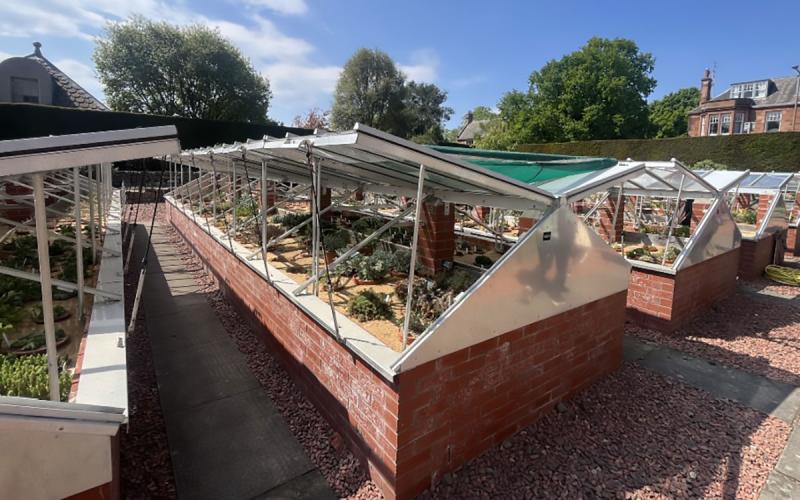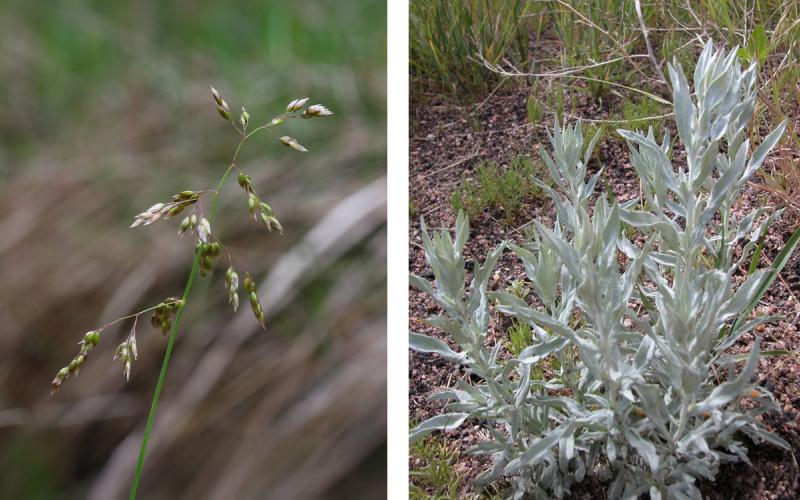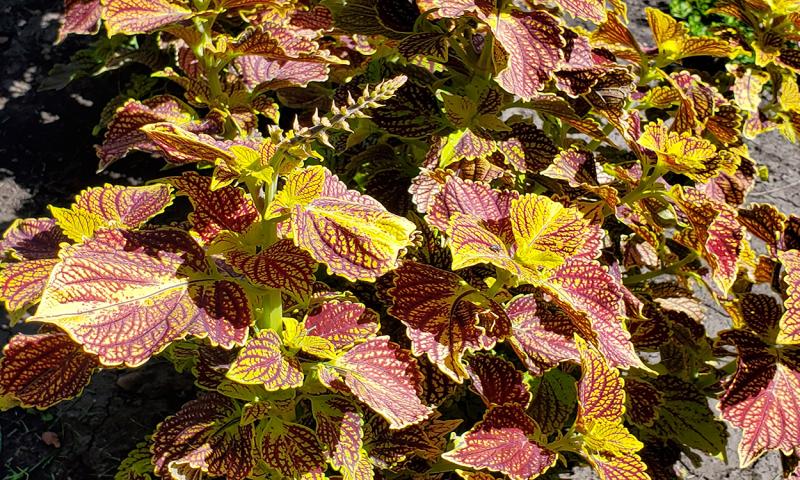
Original article by David Graper, former SDSU Extension Horticulture Specialist and Master Gardener Program Coordinator. Updated by Kristine Lang, Assistant Professor and SDSU Extension Consumer Horticulture Specialist.
Coleus have long been a great plant for gardens, generally grown as foliage plants that offer a huge variety of foliage colors, and can be grown in a variety of soils in part shade to sun. In recognition of this important garden plant, the National Public Garden Bureau declared 2015 the Year of the Coleus.
Coleus (Plectranthus scuttelarioides) has been grown for hundreds of years, but it has seen a significant resurgence in popularity over the last decade or so as a mass of new cultivars have been introduced onto the market, mostly adapted to growing in sunnier locations than were typical for coleus. This plant was traditionally planted in the shade, but many of these new introductions grow best with morning sun and shade from afternoon sun, particularly if grown in a hot location, such as up against a south or west-facing wall. Coleus can even be grown in full sun if the plants do not experience water stress. Since these plants can grow quite large, keeping them well watered during the heat of the summer is very important.
Selecting the Right Coleus for Your Garden
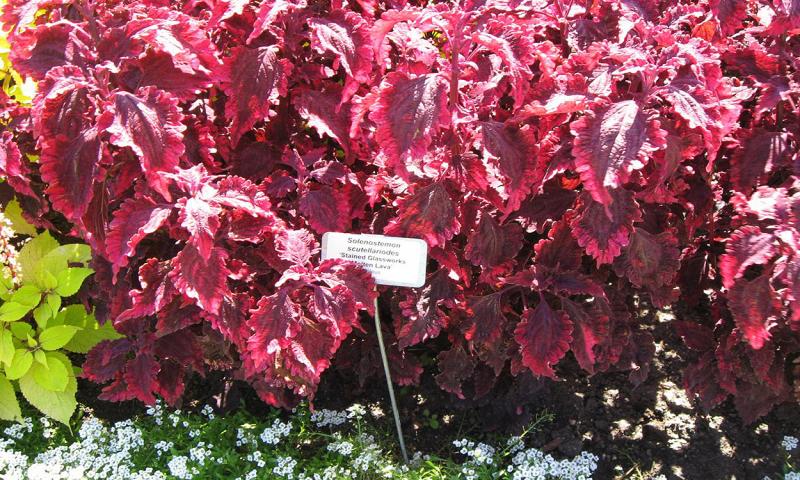
There are hundreds of different cultivars of coleus, but before you decide to grow one, decide on the planting site and determine its sun exposure. Check the information on plant tags to see if a particular cultivar is adaptable to a similar amount of sun. While many are adapted to sunnier sites, many still need to be planted in the shade. Similarly, some cultivars perform at their best in a sunnier site, but they grow poorly or have poor coloration in a site that is too shady. Often coleus that have very light-colored, chartreuse foliage, for example, will show some sunburn if grown in too much sun. Plants with darker-colored foliage seem to do better in sunnier locations.
Plant size can vary quite a bit from one cultivar to another. Again, check the plant tag to learn about how large a plant will grow. Some of the more dwarf types may only grow about 8 to 12 inches tall and wide, while many of the newest releases can reach 24 to 30 inches in height and 12 to 18 inches wide.
Growing Coleus
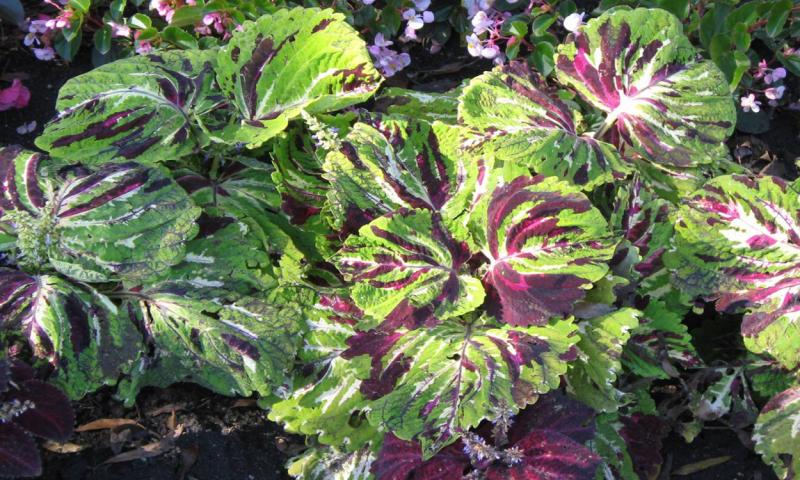
Coleus are easy to propagate. They root easily from cuttings when you place the cuttings into a propagation media, keep them moist with a high humidity level high until new roots are formed. Up until recently, most of the cultivars available at local garden centers were grown from seed, but in recent years more and more vegetatively-propagated cultivars are on the market. Many of these new cultivars offer some of the greatest variety in foliage coloration, leaf size and shape. Often times the vegetatively propagated cultivars will be sold in larger containers, usually four-inch pots or larger, instead of the smaller cell packs for the seed-propagated cultivars.
Coleus are warm-season plants that grow best during the heat of the summer. Be careful to not put out plants until the soil has warmed up and there is no danger of frost. Coleus planted into cold, wet soils will become stunted and could take a few weeks to recover and really start to grow well again. It’s a good idea to pinch out the tip of the shoots before planting, especially if each plant has only a single stem. Just use your thumb and finger to remove the top ½” or so of the stem and top couple nodes. This will encourage the plants to branch much better and result in a fuller looking plant in your garden weeks later.

Give your plants room to grow, but also consider how quickly you want your planting bed to look full. But remember that “plant spread” is how big the plant will grow when it is mature. If you want to fill a space more quickly, plant more closely together. While a single plant can be an impressive focal point or specimen plant in a landscape, coleus make dramatic and impressive mass plantings, so closer groupings of a dozen plants or more can be fun to try.
This plant works equally well when planted in containers, but make sure the container is large enough and that the coleus you choose to use will not grow so large that it covers up other plant species in the container planting. Most cultivars have strong, upright growth, so a coleus plant can make a good focal point or “thriller” plant in a container, or even a hanging basket. If it starts getting too large, pinch or cut back some of the stems to encourage branching and control the size.
Boundless Color and Cultivars

Coleus provide a kaleidoscope of foliage colors and forms to choose from; in fact it is difficult to even find one that has mostly green leaves! Mosaic patterns are quite common, where you will see patterns of various colors, sometimes along the margins of the leaves, along major veins, or in between veins. Some cultivars have leaves that have tinier spots or speckles. Leaf undersides, petioles and stems can also add a lot of interest to some cultivars by having complimentary or contrasting colors to that of the leaves. Leaf margins can also be quite variable, from smooth, to toothed or divided, offering even greater variety to choose from.
Coleus is part of the mint family, so it has the typical square stems and opposite leaves, as well as the spike-type flower stalks with tiny, usually lavender or white, tubular flowers. However, the flower spikes are usually thought as a negative attribute that is pinched out as they appear. Many plant breeders select for a lack of flowering, since most people do not like the flower spikes. From trials at McCrory Gardens, most of new coleus produce few to no flowers.
There have been multiple coleus cultivars trialed at McCrory Gardens over the years. These were some of the best performing cultivars for sunny and part shade locations.

Full Sun
- Coleosaurus
- Henna
- Marquee™ Blonde Bombshell
- Marquee™ Box Office Bronze
- Marquee™ Red Carpet
- Colorblaze® El Brighto
- Colorblaze® Torchlight®
Part Shade
- Cranberry Bog
- Honey Crisp
- Kong™ ‘Mosaic
- Stained Glassworks Eruption
- Stained Glassworks Molten Lava
Cold Sensitivity and Pest Management
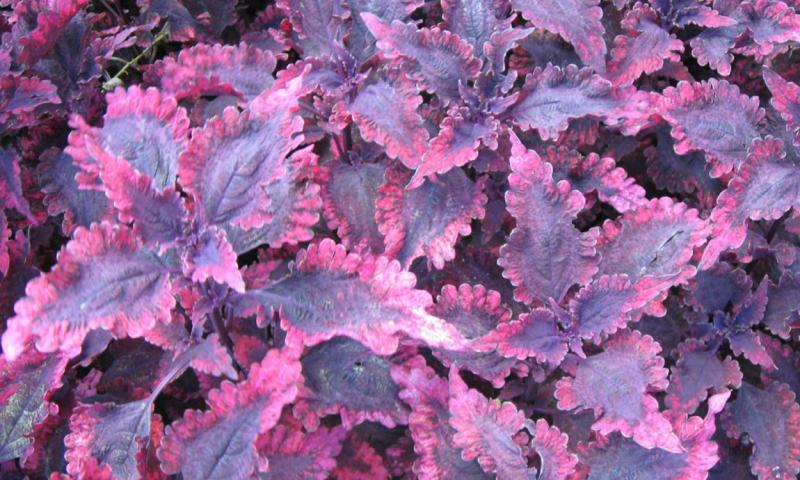
Coleus are quite frost-sensitive, so if a frost is predicted, you better take the containers inside or cover coleus plantings to protect them from the cold. But even covering may not protect some coleus cultivars from cold damage. The most-common sign of injury is leaf drop. Cuttings can be taken prior to the frost to root and grow if you want to try to keep plants going over the winter months. Check the plants carefully for insects before bringing them inside. Aphids and whiteflies are common pests of coleus that can infest plants outdoors and continue to be a problem when you have them in your home. Mealy bugs, a common indoor insect pest, also love to feed on coleus, so watch out for the small white, cottony masses of insects to show up on the plants.
